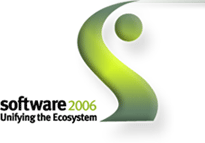![]() Matt Marshall at SiliconBeat is wondering whether Oracle CEO Larry Ellisons 60% ownership (*) in NetSuite, preparing for a $2B IPO represents a conflict of interest.
Matt Marshall at SiliconBeat is wondering whether Oracle CEO Larry Ellisons 60% ownership (*) in NetSuite, preparing for a $2B IPO represents a conflict of interest.
I don’t think so. Oracle dipped into the On-Demand market before, it did not quite work, so Ellison decided to tackle it differently, through his investments. He is a Warlord battling in different theaters and maintaining two separate, not directly interchangeable armies. This is still true, even though Oracle’s second attempt in the SaaS space will likely be successful, especially after absorbing Siebel.
The issue isn’t so much On-Premise vs. On-Demand anymore, but the market segment they go after: NetSuite is still mostly an SMB player, although more the “M” than the “S” piece. The SMB market requires a totally different Sales and Marketing approach, amongst others, and Oracle with it’s current “legacy” salesforce can’t reach this market profitably. It’s the Business Model, not only the technology, that requires a separate “army”.
For the above reasons I’ve long been advocating that SAP also should invest in it’s own NetSuite-equivalent (or better, and I happen to know who ![]() ) to tackle the SMB market.
) to tackle the SMB market.
Back to the Ellison factor, Jason still contends that “NetSuite could get scooped up by Oracle before it ever sees the light of the public markets.”
* (I think it’s actually less than 60%, but more than 50% – but that’s irrelevant here.)
Update (4/2): Vinnie agrees: “I have always believed if Larry had invested in every one of Oracle’s alums, he would be a far richer man than Bill Gates…. Maybe Larry should similarly invest in Open Source, Third Party
Maintenance, BPO, Search, Web services start-ups. They represent the
growth and the innovation in the market, not the company he founded.”
Sramana Mitra‘s post is also worth reading.
Tags: NetSuite, IPO, NetSuite IPO, investing, software, SaaS, On-Demand, CRM, ERP, Oracle, ORCL, Ellison, Larry Ellison, SAP, SMB, SME, Enterprise Software







Recent Comments